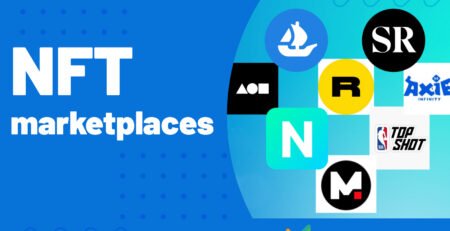The Complete Guide to Google AdSense: Traffic Requirements, Approval Process, and Earning Strategies
AdSense approval requirements
Google AdSense remains one of the most popular monetization methods for bloggers and website owners worldwide. However, getting approved and maximizing earnings requires understanding specific requirements, strategies, and best practices. This comprehensive guide covers everything you need to know about AdSense approval, traffic requirements, earning potential, and optimization techniques.
Understanding Google AdSense Traffic Requirements
How Many Pageviews for AdSense Approval?
One of the most frequently asked questions among new bloggers is about minimum traffic requirements for Google AdSense approval. The truth is, Google doesn’t officially specify a minimum number of pageviews required for AdSense approval. However, based on extensive analysis and real-world experiences, certain patterns emerge.
Most successful AdSense applications come from websites with at least 1,000-5,000 monthly pageviews, though approval is possible with lower traffic if content quality is exceptional. The key factors Google considers include:
Content Quality and Originality: Google prioritizes websites with high-quality, original content over those with high traffic but poor content. A blog with 500 monthly visitors but excellent, unique content may get approved faster than one with 10,000 visitors but duplicate or low-quality content.
User Engagement Metrics: Time spent on site, bounce rate, and pages per session matter more than raw traffic numbers. Websites with engaged audiences, even smaller ones, often receive approval more readily.
Geographic Considerations: Traffic requirements may vary by country. Some regions have stricter requirements, while others may be more lenient based on market conditions and competition.
Blogger.com Specific Requirements
For Blogger.com users, the approval process follows the same general guidelines as other platforms, but there are specific considerations:
Platform Credibility: Blogger.com being owned by Google doesn’t guarantee easier approval. The same content quality and traffic standards apply.
Template and Design: Professional-looking Blogger templates can improve approval chances. Avoid cluttered designs or templates that look unprofessional.
Domain Considerations: Custom domains (yoursite.com) generally perform better than subdomain addresses (yoursite.blogspot.com) in terms of approval rates.
Most successful Blogger.com AdSense applications have between 2,000-10,000 monthly pageviews, though approval with lower traffic is possible with exceptional content quality.
The AdSense Approval Process: Difficulty and Strategies
Is AdSense Approval Difficult?
AdSense approval difficulty has increased significantly over recent years. Google has become more selective, implementing stricter quality guidelines and automated review processes. The approval rate varies by region, with some countries experiencing acceptance rates as low as 20-30%.
Common Rejection Reasons:
- Insufficient content
- Poor site navigation
- Missing privacy policy
- Inappropriate content
- Copyright violations
- Low-quality or duplicate content
- Poor user experience
Factors That Increase Approval Chances:
- Consistent publishing schedule
- Mobile-responsive design
- Fast loading times
- Clear site navigation
- Comprehensive privacy policy
- About page with author information
- Contact page
- High-quality, original content
Pre-Approval Checklist
Before applying for AdSense, ensure your website meets these criteria:
Content Requirements:
- Minimum 20-30 high-quality articles
- Each article should be 800+ words
- Original, valuable content
- Proper formatting with headings and subheadings
- Regular publishing schedule
Technical Requirements:
- Mobile-friendly design
- SSL certificate (HTTPS)
- Fast loading speed (under 3 seconds)
- Professional appearance
- Easy navigation
Legal Pages:
- Privacy Policy (mandatory)
- Terms of Service
- About Us page
- Contact information
AdSense Earning Potential and Strategies
How to Earn $100 Per Day from AdSense
Earning $100 daily from AdSense requires strategic planning, consistent effort, and understanding of monetization principles. Here’s a realistic roadmap:
Traffic Requirements for $100/Day: Assuming an average RPM (Revenue Per Mille) of $2-5, you’d need approximately 20,000-50,000 daily pageviews to earn $100. However, RPM varies significantly based on:
- Geographic location of visitors
- Niche and keyword competitiveness
- Seasonal trends
- Ad placement optimization
High-Earning Niches:
- Finance and investment
- Insurance
- Technology and software
- Health and wellness
- Legal services
- Real estate
- Education and online courses
Optimization Strategies:
- Content Strategy: Focus on high-CPC (Cost Per Click) keywords in profitable niches
- SEO Optimization: Target long-tail keywords with commercial intent
- User Experience: Improve site speed, mobile responsiveness, and navigation
- Ad Placement: Experiment with ad positions and formats
- Traffic Diversification: Don’t rely solely on search traffic
AdSense Payment Rates: Understanding RPM and CPC
AdSense Pay Per 1,000 Views (RPM): AdSense payments vary dramatically based on multiple factors. Average RPM ranges from $0.50 to $10, with most websites earning between $1-4 per 1,000 pageviews.
Factors Affecting RPM:
- Geographic Location: US, UK, Canada, Australia typically have higher RPMs
- Niche: Finance, insurance, and legal niches command premium rates
- Seasonality: Q4 (October-December) generally shows higher earnings
- Device Type: Desktop often pays more than mobile
- Ad Format: Display ads, video ads, and native ads have different rates
Realistic Earning Expectations:
- New website (0-6 months): $0.50-2.00 RPM
- Established website (6-18 months): $1.50-4.00 RPM
- Authority website (18+ months): $3.00-8.00+ RPM
Best Content Types for AdSense Success
High-Performing Content Categories
Evergreen Content: Articles that remain relevant over time perform consistently well. Examples include:
- How-to guides and tutorials
- Product reviews and comparisons
- Educational content
- Problem-solving articles
Commercial Intent Keywords: Content targeting keywords with buying intent typically generates higher AdSense revenue:
- “Best [product] for [purpose]”
- “[Product] review”
- “[Service] comparison”
- “How to choose [product]”
Long-Form Content: Articles exceeding 2,000 words generally perform better for both SEO and AdSense earnings due to:
- More ad placement opportunities
- Better search engine rankings
- Higher user engagement
- Increased authority signals
Content Optimization Strategies
Keyword Research: Use tools like Google Keyword Planner, SEMrush, or Ahrefs to identify:
- High-volume, low-competition keywords
- Commercial intent keywords
- Long-tail keyword opportunities
- Related LSI keywords
Content Structure: Optimize articles with:
- Compelling headlines with target keywords
- Clear H2 and H3 subheadings
- Bullet points and numbered lists
- Internal and external links
- Image optimization with alt text
AdSense Alternatives: Exploring Better-Paying Options
Ad Networks That Pay More Than AdSense
While AdSense is reliable and widely accepted, several alternatives may offer higher revenue potential:
Media.net: Microsoft’s contextual ad network often provides competitive rates, especially for English-speaking audiences. RPM can be 10-30% higher than AdSense in some niches.
Ezoic: AI-powered ad optimization platform that often increases earnings by 50-200% through advanced testing and placement optimization. However, requires significant traffic (typically 10,000+ monthly sessions).
AdThrive: Premium ad network requiring 100,000+ monthly pageviews but offering RPMs of $15-25+ for qualified publishers.
Mediavine: Another premium network (50,000+ monthly sessions required) with RPMs often exceeding $10-20.
PropellerAds: Good for international traffic with various ad formats including push notifications and native ads.
Infolinks: In-text advertising that can supplement AdSense earnings without replacement.
Revenue Diversification Strategies
Affiliate Marketing: Often more profitable than display ads, especially in product-focused niches. Can generate $5-50+ per conversion versus pennies per click.
Sponsored Content: Direct partnerships with brands can yield $100-1,000+ per post depending on audience size and engagement.
Digital Products: Creating and selling courses, ebooks, or tools often provides the highest profit margins.
Email Marketing: Building an email list enables direct promotion of affiliate products and services.
AdSense Disadvantages and Limitations
Common Drawbacks
Low Revenue Potential: Compared to direct advertising or affiliate marketing, AdSense often provides lower earnings per visitor.
Strict Policy Compliance: Google’s policies are extensive and constantly evolving. Policy violations can result in account suspension or termination.
Payment Threshold: $100 minimum payout threshold can be challenging for new publishers.
Click Fraud Concerns: Invalid clicks can result in earnings deductions or account penalties.
Limited Control: Publishers have minimal control over ad appearance, content, and relevance.
Revenue Fluctuations: Earnings can vary significantly based on seasonal trends, algorithm changes, and market conditions.
Mitigation Strategies
Policy Compliance: Regularly review AdSense policies and maintain compliant content and practices.
Traffic Quality: Focus on organic, engaged traffic rather than artificial inflation methods.
Revenue Diversification: Don’t rely solely on AdSense; incorporate multiple revenue streams.
Performance Monitoring: Use Google Analytics and AdSense reports to track performance and identify issues early.
Technical Optimization for AdSense Success
Best Browsers and Technical Setup
Browser Optimization: While the browser used by publishers doesn’t directly affect AdSense earnings, certain browsers provide better development and monitoring tools:
Google Chrome: Offers the best integration with Google services and comprehensive developer tools for ad optimization and troubleshooting.
Firefox: Provides excellent privacy controls and developer tools, useful for testing ad implementations.
Safari: Essential for testing iOS user experiences, as mobile traffic often comprises 60-80% of total visits.
Site Speed and Performance
Core Web Vitals: Google’s ranking factors that directly impact ad performance:
- Largest Contentful Paint (LCP): Should be under 2.5 seconds
- First Input Delay (FID): Should be under 100 milliseconds
- Cumulative Layout Shift (CLS): Should be under 0.1
Ad Loading Optimization:
- Implement lazy loading for ads below the fold
- Use asynchronous ad codes
- Optimize image sizes and formats
- Minimize HTTP requests
- Use content delivery networks (CDNs)
Mobile Optimization
With mobile traffic dominating most websites, mobile optimization is crucial:
Responsive Design: Ensure ads display properly across all device sizes Touch-Friendly Placement: Avoid accidental clicks that could result in invalid click penalties Page Speed: Mobile users expect faster loading times AMP Implementation: Consider Accelerated Mobile Pages for news and blog content
Advanced AdSense Strategies
A/B Testing and Optimization
Ad Placement Testing: Systematically test different ad positions to maximize revenue without compromising user experience:
- Above the fold vs. below the fold
- Within content vs. sidebar
- Header vs. footer placement
Ad Format Experimentation: Test various ad sizes and formats:
- Large rectangle (336×280)
- Leaderboard (728×90)
- Mobile banner (320×50)
- Responsive ads
- Native ads
Heat Map Analysis: Use tools like Hotjar or Crazy Egg to understand user behavior and optimize ad placement accordingly.
Seasonal Optimization
Q4 Strategy: Prepare for higher-earning holiday season by:
- Publishing gift guides and holiday content
- Optimizing for seasonal keywords
- Increasing content production
- Improving site speed for higher traffic volumes
Year-Round Planning: Develop content calendars aligned with seasonal trends in your niche.
Conclusion
Success with Google AdSense requires a comprehensive approach combining high-quality content creation, technical optimization, and strategic planning. While traffic requirements aren’t officially specified, focusing on building an engaged audience of 1,000-5,000 monthly visitors with exceptional content provides the best foundation for approval.
Earning significant income from AdSense demands patience, consistency, and continuous optimization. While reaching $100 daily is achievable, it typically requires substantial traffic (20,000-50,000 daily pageviews) or high-value niches with excellent optimization.
Remember that AdSense should be part of a diversified monetization strategy. Combining display ads with affiliate marketing, sponsored content, and digital products creates multiple revenue streams and reduces dependence on any single source.
The key to long-term AdSense success lies in prioritizing user experience, maintaining policy compliance, and continuously adapting to Google’s evolving requirements. Focus on creating valuable content that serves your audience, and monetization will naturally follow.












